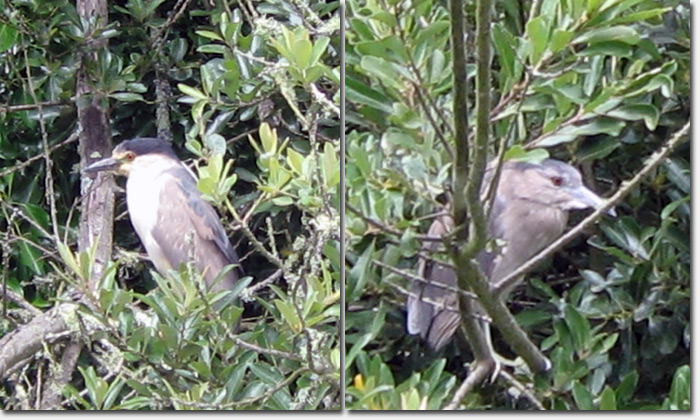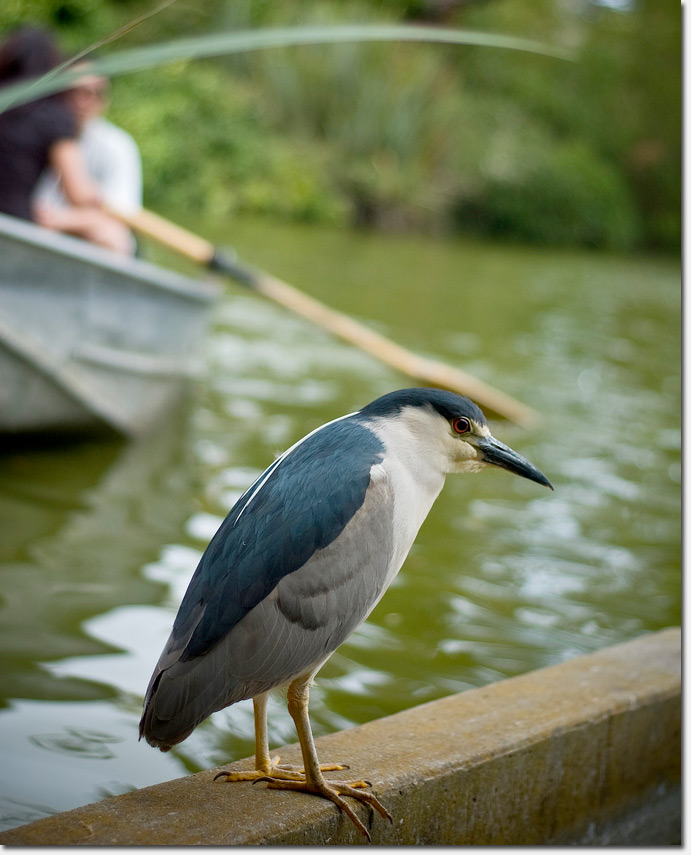
Night herons at Stow Lake. Photos by John Freeman
RichmondSFBlog reader (and Richmond District historian) John Freeman was boating on Stow Lake with his grandchildren last Wednesday when he spotted the some night herons in the bushes. “I’ve seen night heron only once in GGP years ago, so they are either elusive or not common,” John wrote.
Their name name refers to the largely nocturnal feeding habits of this group of birds, and the croaking crow-like call of the best known species, the Black-crowned Night Heron. Adults are short-necked, short-legged and stout herons with a primarily brown or grey plumage, and, in most, a black crown. Night herons stand still at the water’s edge, and wait to ambush prey, mainly at night. They primarily eat small fish, crustaceans, frogs, aquatic insects, and small mammals. During the day they rest in trees or bushes. [Wikipedia]
Certainly of smaller stature than their larger Great Heron relatives which are well known for their annual nesting season at Stow Lake.
They must get a kick out of watching us humans float around the lake, rowing wooden paddles and churning paddle boat wheels.
Good looking out, John! Thanks for the pics.
Sarah B.

Night heron at Stow Lake, 2008. Photo by Adam A.
That last picture is awesome 🙂
Saw one of these in the bushes over at Mountain Lake Park a few weeks back.
There are several resident Night Herons at the San Francisco Zoo – they spend most of their time at the Lower Lake & African Savanna exhibits. At night, they’re observed stalking/hunting gophers on the zoo’s large lawns. I wouldn’t be surprised if they’re helping the gardeners in the park as well.
Wow- so beautiful. Great photos.
A-ha! That’s what those buggers are. I see a pair of these on the East end of the Panhandle by McKinley Monument on Baker in the wee hours of the morning (4am-ish). I thought they were some kind of Tern. I always thought it was weird to see water-birds in the panhandle. They root around in the grass. That end of the panhandle has had some drainage issues in the past. They must like some of the bugs found in the wetland.